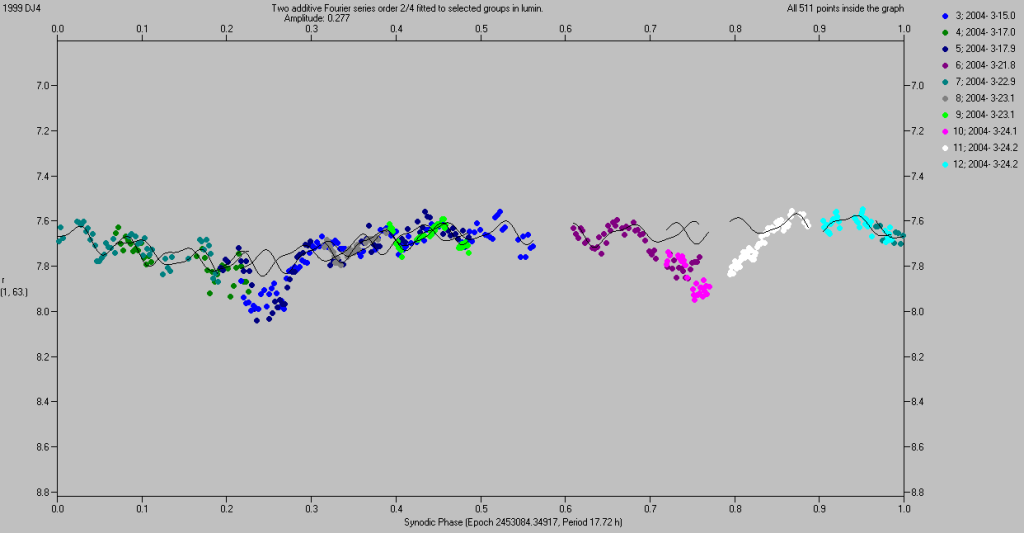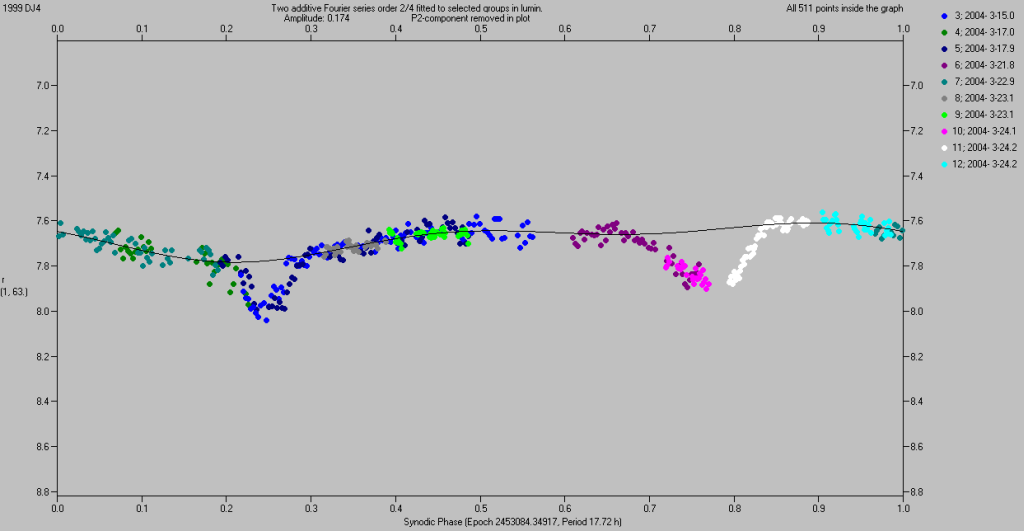Binary NEA 1999 DJ4
Updated 2004 April 1.
Orbit:
Apollo,
q = 0.957 AU, a = 1.851 AU, i = 9.2 deg (MPEC 2004-A02)
Lightcurve observations made
from Ondrejov Observatory on 7 nights during 2004 Feb. 21.0 to Mar. 22.9,
from Elginfield Observatory of University of Western Ontario on Mar. 23.1 and 24.2,
and from Tenagra II on Mar. 28.2
revealed that 1999 DJ4 is an asynchronous binary asteroid.
Estimated parameters of the binary system:
Primary's rotation period: 2.514 h (error <0.001 h)
Amplitude of the primary's rotation lightcurve: 0.10 mag.
It indicates that the primary's shape is slightly elongated with equatorial
axes ratio about 1.1 (assuming we had an equator-on aspect).
Orbital period: 17.72 +/- 0.01 h
Secondary-to-primary mean diameter ratio: about 0.5 (not well constrained but error perhaps 0.1-0.2).
Amplitude of the long-period lightcurve component outside
the eclipse minima: >0.10 mag. It is likely caused
by a synchronous rotation of the secondary that is not quite round.
The estimated parameters of the binary system are strikingly
similar to parameters of other known
binary NEAs.
Participating people :
Petr Pravec, Peter Kusnirak, Lenka Sarounova, Ondrejov Observatory
Peter Brown, Nicole Kaiser, University of Western Ontario
Gianluca Masi, University of Rome "Tor Vergata"
Franco Mallia, Campo Catino Astronomical Observatory
Fig. 1: Lightcurve data from 2004 Mar. 15.0 to 24.2 folded with the orbital period.
The data include rotational variations of the two bodies as well as their mutual
eclipse/occultation attenuation events.

Fig. 2: The same data as in Fig. 1 but with the primary's rotational
component removed. They show a rotational variation of the non-spherical secondary (fitted with
the curve) and mutual eclipse/occultation attenuation events between the two components.

Back to the Ondrejov NEO program page.

